Voluntary Benefits Voice
M A G A Z I N E





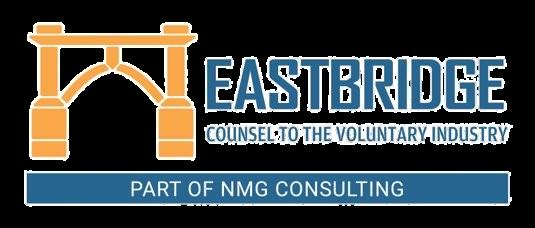

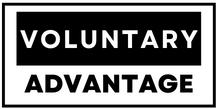
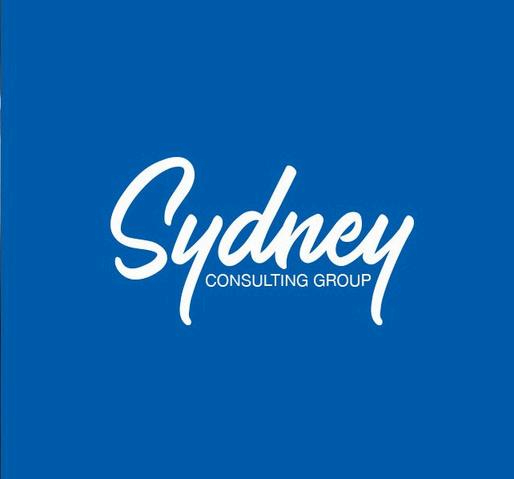
Jennifer Daniel Aflac

Jack Holder EBIS

Paul Hummel

Rachel McCarter Mercer


Editors
Heather Garbers | Trevor Garbers
For Media and Marketing Requests Contact:
Heather@voluntary-advantage com
Trevor@voluntary-advantage com
Mailing Address
10940 S Parker Rd #257 Parker, Colorado 80134
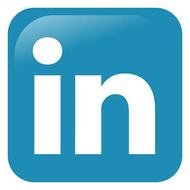
Steve Clabaugh CLU, ChFC
Mark Rosenthal PwC

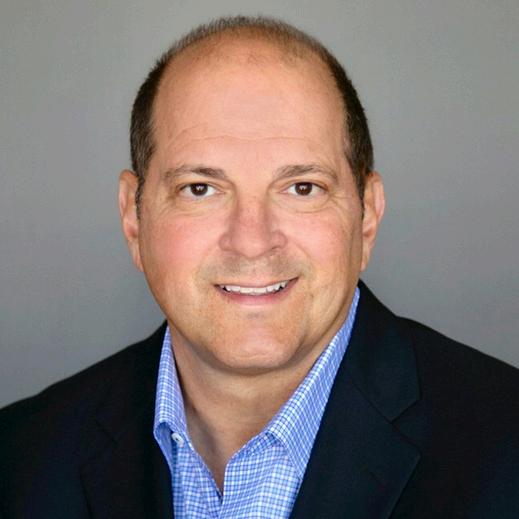
Seif Saghri Founder
Tim Schnoor Birch Benefits
Sydney Consulting Group A d v i s o r y B o a r d


Hunter Sexton, JD, MHA

The2025Work-LifeBalanceStudy: WhatBrokersNeedtoKnow
CaringfortheCaregivers:WhyComprehensiveCaregiving BenefitsAretheNewMust-HaveinEmployeeBenefits
CultureIstheNewBenefit:HowtheBigBeautifulBillChanges Everything(AndNothing)
MeetingtheMoment:WhyPaidLeaveandCaregiving SupportAreNon-NegotiableinToday’sWorkplace RelationalLeadership:What’sHappening?(Part1)
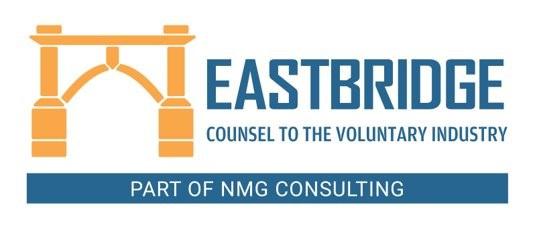
HandleWithCare:TheRapidly GrowingNeedForFamily CaregiverBenefits

CaregiverBurnoutIsReal:Why MentalHealthSupportShould BePartofEveryFamilyCare Strategy
This month, I want to share some thoughts on a question that comes up on nearly every broker panel I’ve ever attended:
“How
It’s a valid question but also a bit of a misleading one In my opinion, looking good on a spreadsheet is actually the easy part Spreadsheets are simply tools They help brokers and clients compare available benefit options side by side benefits, rates, and value propositions in a clear and digestible format. It’s a necessary step in the decision-making process, especially when clients are weighing financial impact alongside perceived value for employees.
But getting on the spreadsheet in the first place? That’s where the real work begins.
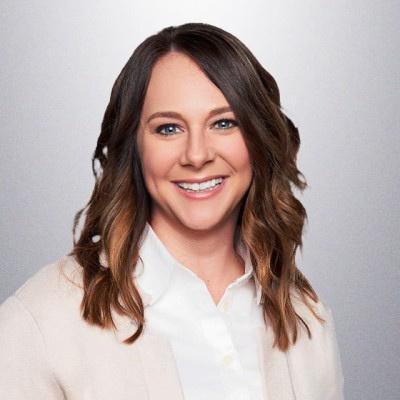
Being included in that initial side-by-side comparison requires trust a strong partnership with your broker and proof that the solutions you bring to the table are credible, competitive, and worthy of client consideration Without that trust, you won’t even make it to the evaluation stage
Voluntary benefits professionals know that cost is only one piece of the puzzle The decision to move forward with a carrier often comes down to the full package: the member experience, administrative ease, tech integrations, bundle discounts, claims processing capabilities, and more These elements many of which also appear on that same spreadsheet carry significant weight in a broker’s recommendation and a client’s decision
In reality, most carriers are fairly aligned when it comes to pricing The real differentiator is whether your value justifies your cost If your rates are at the top end of the range but you’re not offering enhanced benefits, medical claim integration, or superior service to match, the message is clear: profit may be a higher priority than partnership
And let’s be honest most carriers have full visibility into their competitors’ plan designs thanks to state filings or market research. If you want to look strong on a spreadsheet, start there. Know your competition, match their offerings, and aim to deliver more.
Ultimately, the spreadsheet isn’t the problem. It’s a reflection of value and whether or not a carrier has earned its place at the table.

By Eastbridge Consulting Group
Some people call it a “secret second job” but it’s really not that much of a secret. Research published by Forbes.com estimates 73% of employees also spend the equivalent of a part-time job 20 to 30 hours a week on family caregiving, a number up dramatically in just the last few years, according to Forbes
That includes about 53 million adults (one in five Americans) who help older relatives, spouses, friends or neighbors with daily tasks such as cooking and dressing, according to seniorlivingorg Family caregivers are mostly working women who care for aging parents
The median age of caregivers in Senior Living’s study was 42, an age when most people are still in the workforce and many are also caring for children. Nearly half (47%) of caregivers receive no formal support, such as financial aid, counseling or respite care, despite 88% saying they need more help.
No wonder then, employees show strong interest in gaining access to benefits for caregiver, family and senior care support from their employers. In fact, it tops employees’ list as the benefit their employers do not currently offer but they are most interested in acquiring. Eastbridge’s “Employee Demographic Details: Exploring Attitudes and Behaviors About Voluntary/ Worksite Benefits” MarketVision The Employee Viewpoint report shows 41% of employees who don’t currently have access to caregiver benefits are interested in these benefits Not only is this benefit mentioned most often by employees across all employer size groups, interest has grown significantly in just the past two years, up from 29% in 2022 TM ©

Source: “Employee Demographic Details: Exploring Attitudes and Behaviors About Voluntary/Worksite Benefits” MarketVision The Employee Viewpoint report, Eastbridge Consulting Group, 2024 & 2022 TM ©

Despite this strong interest, an average of only 24% of employees surveyed say their employers offer caregiver benefits, far fewer than mental health benefits (50%), telemedicine (43%) or financial wellness/ planning benefits (39%). And even though interest has increased in the past two years, the number of employees who say they have access to caregiver benefits through their employer has actually dropped in the past two years, from 34% in the previous survey
Employers offer a variety of nontraditional benefit offerings, or plan to in the next few years Those surveyed for the 2025 “Employer Size and Industry Demographics for the Voluntary/Worksite Market” MarketVision The Employer Viewpoint report most often offer mental health programs (48%), telemedicine (35%) and bereavement support (28%) But caregiver benefits rank near the bottom of the list, except for the largest employers with more than 10,000 employees. Only 14% of employers on average offer these benefits half as many as just two years before, when 28% offered them.
Andeventhoughinteresthas increasedinthepasttwoyears,the numberofemployeeswhosaythey haveaccesstocaregiverbenefits throughtheiremployerhasactually droppedinthepasttwoyears,from 34%intheprevioussurvey.
However, it appears employers may be gaining a better understanding of their employees’ demand for caregiver benefits It’s now the most common nontraditional benefit employers say they plan to offer in the next one to two years at 26%, up from 21% in the previous survey. Even better news: Smaller employers are just as likely as large employers to say they plan to add caregiver/family/senior care programs to their benefit offering in the next one to two years.
For employers to meet their goals of providing greater access to caregiver benefits for their employees, voluntary benefit carriers may need to expand their offerings

Source: Employer Size and Industry Demographics for the Voluntary/Worksite Market MarketVision The Employer Viewpoint© reports, Eastbridge Consulting Group, 2025

Source: Emerging Voluntary Benefits and Services Frontline™ Report, Eastbridge Consulting Group, 2023
The majority (64%) of carriers do not currently offer caregiving support benefits or services with their voluntary products, according to Eastbridge’s 2023 “Emerging Voluntary Benefits and Services” Frontline™ report, although another 9% of those surveyed planned to introduce them within the next year
Carriers offering caregiver support services most often offer them as a benefit (63%), while 13% offer a value-added or discount program, and more than a third offer both The most common type of caregiver support is a child care or family care benefit if insureds are hospitalized due to an illness or accident Far less common are the kinds of benefits employees may need most: a family medical leave benefit to care for a parent, spouse or child; or an EAP program that addresses child care or elder care issues.
Hospital indemnity plans are the products most likely to include caregiving support services, followed by short-term disability, long-term disability and accident plans.
A few carriers include caregiver benefits in their critical illness or term life products.
The most common reason carriers cite for interest in caregiving support services is the aging population. Other reasons include the lasting effects of the pandemic, greater awareness of support and paid family medical leave programs, the effects of presenteeism, and more employees becoming caregivers
The good news is most carriers surveyed expect the voluntary/worksite market will offer new products, benefits or services in the next two years to support caregivers A few carriers say work flexibility will become more common, or coverage will be extended to parents or grandparents
It’s likely none too soon. Older adults are one of the fastest-growing groups in the country, and by 2040 more than 78 million Americans will be age 65 or older, according to the National Council on Aging. The need for family caregiving and employee benefits to support it will only grow, too.
Eastbridge is the source for research, experience, and advice for companies competing in the voluntary space and for those wishing to enter For over 25 years, they have built the industry’s leading data warehouse and industryspecific consulting practice Today, 20 of the 25 largest voluntary/worksite carriers are both consulting and research clients of Eastbridge

Danielle Lehman Senior Consultant
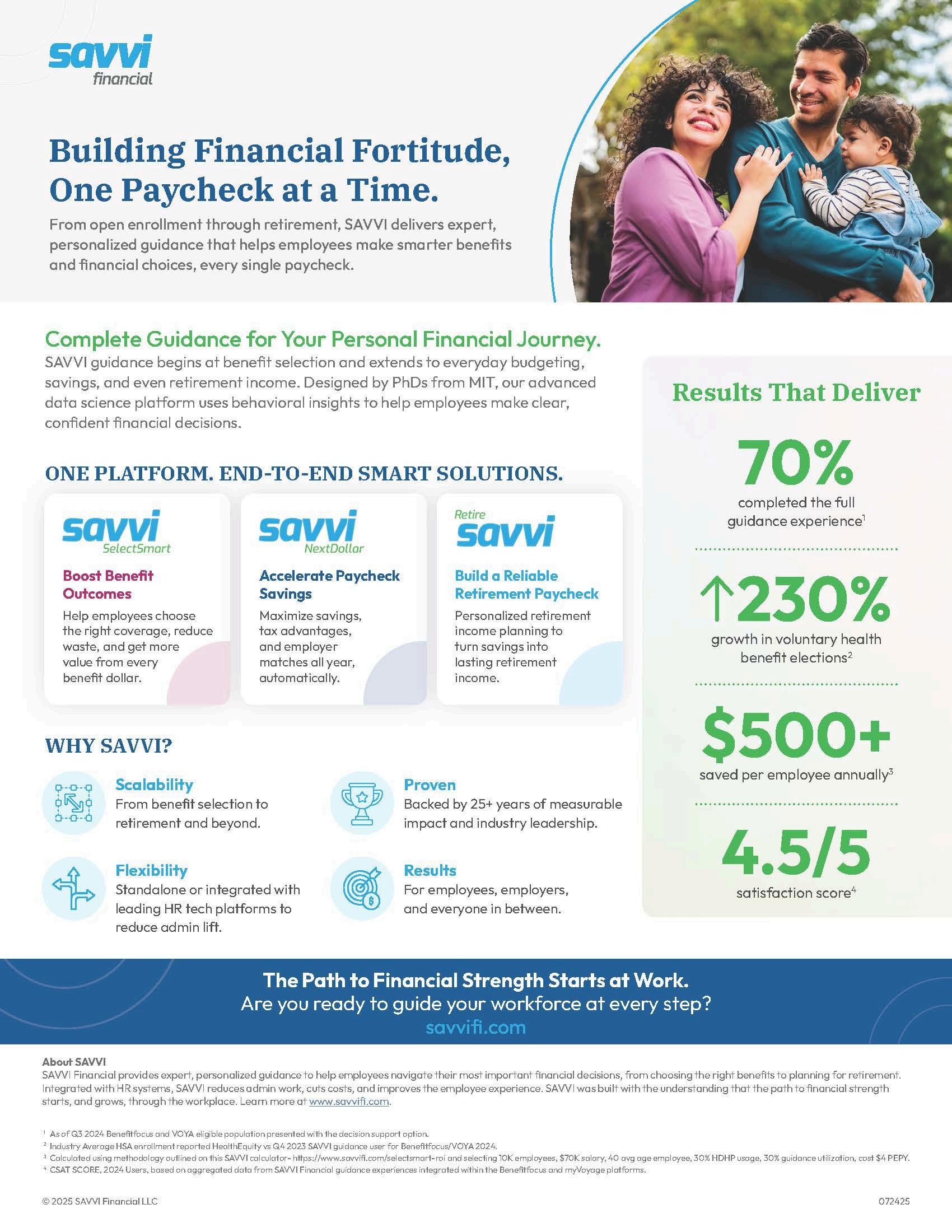

By PES Benefits
More employees than ever are juggling fulltime work and caregiving responsibilities Whether it’s checking in on an aging parent, coordinating care for a child with special needs, or helping a spouse through recovery, these situations are quietly playing out across workplaces every day; and they’re taking a toll
For brokers, this growing challenge presents an opportunity to help employers support their people in more meaningful ways.
A 2024 study published in Psychological Science found: “Taking on a caregiving role reduced individuals’ life satisfaction and mood while increasing feelings of depression, anxiety, and loneliness, particularly during the first two years of caregiving.” [1]
Caregivers don’t always identify themselves that way They’re just doing what needs to be done But over time, the emotional and mental toll adds up Many employees are burning out without ever speaking up By the time it shows in their performance or attendance, the impact is already being felt across the business
While onsite daycare or eldercare stipends are helpful, not every employer has the resources to offer them. But one benefit nearly every organization can implement affordably? Mental health support designed with caregivers in mind.
That includes:
On-demand virtual counseling for stress, grief, or anxiety
Short-term therapy options that remove long waitlists and reduce stigma
Mental health coaching to manage caregiver guilt, decision fatigue, and boundary-setting
Resilience and mindfulness tools tailored to the caregiving experience
These services become even more impactful when they’re delivered via mobile apps or digital platforms, meeting caregivers where they are on their time, in their space. Caregivers rarely have extra time in their day. They need support that is simple to use, available when they need it, and doesn’t add to their to-do list. That’s where virtual mental health care stands out. Whether it’s through an app, a live chat, or a phone call, these tools let people get help in a way that fits their lives.
For brokers, this is a smart way to bring added value The more accessible the benefit, the more likely employees are to actually use it
The rise of virtual mental health care has been a game-changer for caregivers, who often can’t afford the time or energy traditional therapy requires
With 24/7 access, culturally competent support, and total privacy, virtual care removes many of the barriers that keep employees from getting the help they need
Brokers are able to lead the way by recommending solutions that offer:
A spectrum of mental health services (therapy, coaching, stress tools)
Mobile-first, easy-to-navigate platforms
Providers trained in family dynamics and caregiver issues
Employer dashboards can be used to monitor engagement and adjust communications
When clients ask how to better support their teams, caregiver-friendly solutions are a great place to start. Mental health services that reflect the real experience of caregiving can improve engagement, reduce stress-related absences, and show employees their employer understands what they’re going through.
Helping clients move beyond standard policies and focus on practical, everyday tools is how brokers make a lasting difference

PES Benefits is dedicated to revolutionizing the employee benefits landscape with cutting-edge technology, administration, education, and virtual care solutions. Since its inception, PES Benefits has focused on simplifying the benefits experience, making it more accessible and meaningful for all involved.

By Jennifer Beck
Work-life balance can be an elusive goal for employees – especially in today’s hyperconnected, always-on work environment For employers, it’s just as challenging: how do you encourage high performance without driving burnout, while also offering the benefits and support that help employees maintain the balance they need?
In the ARAG Legal Insurance 2024 study, we found that work-life balance ranked among the top three stressors keeping employees up at night. That insight prompted us to dig deeper. For our 2025 Work-Life Balance Study, we surveyed 1,600 full-time employees, spanning generations, industries and roles, to explore how people perceive work-life balance today.
We also canvassed an additional 35 seasoned HR professionals to help capture the employer’s perspective
The findings from the 2025 ARAG Work-Life Balance Study offer insights into how employees define work-life balance, what benefits they prioritize, and how employers can better support a healthier dynamic It’s a timely conversation – one that benefits brokers are well-positioned to lead
Work-life balance isn’t a one-size-fits-all concept Still, when employees describe what it means to them personally, some shared themes emerge Chief among them is the desire to keep work and personal life as distinct as possible. Yet when the two inevitably intersect, having flexible schedules to address urgent personal matters becomes essential. In fact, 34% of respondents ranked flexibility as the most important factor in achieving balance. Ultimately, striking that balance plays a vital role in managing stress and enhancing overall well-being
As we looked more closely at the findings, generational differences began to emerge Notably, the specific attributes that most influence work-life balance vary by age group – adding meaningful nuance to how employees approach their personal and professional lives
Gen Z prioritizes mental health, flexible schedules and firm boundaries between work and personal life
Millennials value open communication, supportive policies and the freedom to juggle multiple responsibilities as needed.
Gen X focuses on preserving set work hours and prioritizing family time.
Boomers lean into clearly defined work hours and family-first policies and benefits.
These distinctions can be useful guideposts in tailoring benefits to a multigenerational workforce
While the majority of employees (83%) report being at least somewhat satisfied with their current jobs, many still struggle with distractions and stress that impact their performance
The Top Five Distractions Across The Workforce Are:
1.Mental fatigue or burnout
2.Frequent interruptions
3.Unrealistic workloads
4.Stress related to personal financial challenges
5.Anxiety related to family matters
Going deeper on what may be contributing to employee stress and the push-pull of work and home responsibilities:
57% of employees occasionally or frequently work beyond scheduled hours
39% find caring for immediate family members somewhat to extremely stressful
51% of primary caregivers for parents or grandparents report high stress levels
Perhaps most strikingly, 54% of employees who have resigned from a job did so primarily due to work-life balance challenges. Younger generations are especially likely to cite this as a reason for leaving.
These findings underscore the bigger issue: when work-life balance erodes, there can be a ripple effect on turnover, productivity, and absenteeism. For brokers, this data presents an opportunity to open a conversation on how aligned a client’s benefits are with stressors employees may be facing –especially around flexibility, caregiving support and mental health resources
Forbrokers,thisdatapresentsan opportunitytoopenaconversation onhowalignedaclient’sbenefitsare withstressorsemployeesmaybe facing–especiallyaroundflexibility, caregivingsupportandmentalhealth resources.
When it comes to fostering a healthy worklife balance, flexibility is far and away the most valued benefit. That can mean flexible hours, hybrid work arrangements (like working remote on set days) and just having the ability to handle personal needs during the workday, if needed. While 77% of employers in the survey offer that flexibility, nearly half require workers to make up the time or use PTO
Beyond flexibility, employees’ top ranked benefits when it comes to supporting balance are wellness programs, family and caregiving support and financial and legal benefits These tools can help employees navigate life’s demands without compromising work performance
Benefits like generous paid time off (PTO), mental health services, and stress management training are essential tools for supporting employees’ well-being. These offerings help enable employees to maintain their emotional resilience and be fully present at home and the workplace
According to Amy Gonzales, Human Resources Analyst at Merced County, “[Mental fatigue and burnout] greatly impacts employees by making them less productive and disengaging even the best employees We have an EAP that offers counseling sessions and stress management, along with a health clinic that provides stress management and wellness tools and techniques” These initiatives empower employees to prioritize their mental health and well-being.

Family and caregiving benefits, such as paid caregiver leave, emergency childcare, and financial subsidies to offset caregiver expenses, continue to play a pivotal role in helping employees balance personal obligations while remaining engaged at work
One Benefits Manager at a utilities company said that “The effects of caregiving stress often include reduced focus and productivity, increased absenteeism or unplanned time off, emotional and mental health strain, financial stress and an impact on career progression [To combat this,] we offer paid parental leave, enhanced bereavement leave, paid vacation and personal and sick time. FMLA leave is available for eligible employees, and we have an Employees Assistance Program (EAP) that offers confidential counseling and caregiving support resources. We also offer legal and financial consultations.”
These benefits reduce the emotional and logistical strain of caregiving, increase engagement and reinforce a culture of support
Finally, financial and legal benefits are increasingly recognized as critical to worklife balance Employees experiencing financial stress often struggle to focus and perform effectively

Our research found that financial concerns are a major impediment to achieving balance, especially among younger generations.
A Director of Benefits explained, “Personal financial challenges are a significant source of stress for many employees and can have a direct impact on their focus, productivity and overall performance at work”
Legal insurance, in particular, was cited as a valuable resource that helps employees resolve personal legal matters without added stress, contributing to a healthier and more stable work environment
One Director of Benefits in the education field stated, “Legal insurance offers employees peace of mind by providing access to legal support – essentially giving them the reassurance of having a “lawyer on retainer.” This benefit serves as a valuable resource, offering assistance with reviewing legal documents, understanding legal matters and ensuring important protections are in place, such as having a will”
The 2025 Work-Life Balance Study makes one thing clear: employees want flexibility, support and benefits that reflect the realities of their lives By aligning offerings with the evolving needs of today’s workforce – across generations and life stages – brokers can help employers foster a culture of balance, resilience and longterm engagement
Jennifer Beck, Vice President of Customer Experience & Insights - ARAG Legal Insurance: She is responsible for the overall experience of ARAG’s members through the research, analysis and evaluation of current processes and future trends of both consumer expectations and industry innovations

By Heather & Trevor Garbers
Caregiving is no longer a personal issue it’s a workforce issue. With more than half of global employees identifying as caregivers, supporting them has shifted from a nice-to-have to a must-have in employer-sponsored benefits.
Whether employees are caring for young children, aging parents, or other dependents, the caregiving burden is growing According to a recent study, the number of Americans providing care has increased by 45%, and nearly a quarter of US adults now belong to the “sandwich generation” juggling both elder and childcare simultaneously As this trend accelerates, employers are responding with innovative caregiving benefits designed to support retention, productivity, inclusion, and overall employee wellbeing
According to Mercer’s Health on Demand survey, “More than 50% of employees surveyed across 16 global markets considered caregivers (taking care of children, elderly parents or others in need), support for caregiving responsibilities has gone from a luxury option to table stakes,” says Melinda Izbicki, MPH, Senior Principal at Mercer. “These benefits are designed to keep individuals in the workforce, reduce leave and missed work, and give caregivers peace of mind to be present at work”
“Supportforcaregiving responsibilitieshasgonefroma luxuryoptiontotablestakes”
MelindaIzbicki,MPH
SeniorPrincipal,Mercer
The types of benefits employers are implementing span a wide spectrum:
Backup care options when regular care falls through (according to Mercer’s Survey on Health & Benefit Strategies for 2025, over a third of large employers offer backup care)
Childcare Assistance or even onsite
childcare centers
Child and elder care stipends or subsidies
Caregiving concierge services that help employees locate and secure care
Flexible scheduling and paid caregiver leave
Even pet care assistance
These offerings aren’t just good for employees they make solid business sense Data shows that 1 in 5 employees has left a job due to lack of family care benefits, and up to 86% of employees say they’re more likely to stay with an employer who supports their childcare needs. Companies investing in caregiving benefits are seeing returns on investment as high as 425%, thanks to reduced turnover and increased productivity.
“Effectivecaregivingstrategiesmustbe tailoredtoeachorganization’sworkforce” NicoleStec
VicePresident&WellbeingConsulting Leader,LocktonCompanies
According to Nicole Stec, Vice President and Wellbeing Consulting Leader at Lockton Companies, effective caregiving strategies must be tailored to each organization’s workforce “When partnering with clients, we emphasize the importance of analyzing employee demographics to identify specific caregiving needs,” she says For instance, younger generations may prioritize childcare resources, while Gen X employees may need support for both children and aging parents.
The most successful strategies are not standalone programs they’re integrated into a larger wellbeing framework that supports the full spectrum of employee needs.
One innovation gaining traction is concierge-style services, which help employees navigate the complex care landscape These programs reduce stress and help employees focus at work by offloading tasks like researching care providers or managing medical appointments
Caregiver benefits are also a critical component of diversity, equity, and inclusion (DEI) strategies Globally, women provide the majority of caregiving hours, and they’re significantly more likely to miss work to handle caregiving responsibilities By offering support, employers enable more women and other traditionally marginalized groups to stay in the workforce and advance their careers. “Caregiving support fosters a more inclusive environment that enables all caregivers to pursue their careers while raising a family,” Izbicki adds.
Employers are also responding to the high costs associated with caregiving. As Lindsay Steckler notes, the average annual cost of childcare in the US is nearing $10,000, more than 30% of the median individual income To ease this burden, employers are:
Negotiating discounted care rates through networks
Offering care stipends
Promoting use of Dependent Care FSAs
Providing access to virtual support communities and flexible leave
Leadingemployersareadaptingtheir workplacepoliciestobemore caregiver-friendly“
LindsaySteckler SeniorHealth&Performance Consultant,HUBInternational
These benefits help mitigate burnout and keep employees in the workforce especially when 13% to 32% of working caregivers are considering leaving their jobs due to caregiving responsibilities
The message is clear: caregiver benefits are no longer optional As the demands on employees grow more complex, employers must think beyond traditional benefits and provide meaningful support for the real lives of the workforce today
From productivity gains and lower turnover to higher engagement and a more inclusive culture, the return on investing in caregiving benefits is undeniable For voluntary benefits professionals, this provides an opportunity to position innovative benefits addressing this growing need in the marketplace.
Melinda Izbicki, MPH, Senior Principal in the MercerWELL practice: Melinda coleads Mercer’s reproductive health and caregiving vertical (including child and elder care, onsite childcare centers, backup care, caregiver concierge, education support, subsidy options, and neurodiversity solutions), and specializes in helping clients support their caregiving population, in addition to consulting employers on wellness strategy, implementation, and ongoing management


Nicole B. Stec, MBA, MPH, Vice President, Wellbeing Consulting LeaderLockton Companies: Nicole leads the national Wellbeing Consulting Practice and acts as a trusted advisor for clients, supports the generation of new business and relationships, and manages part of a complex book of business Her practice specializes in supporting clients with holistic wellbeing strategies, addressing the four pillars of career, community, financial and self; along with employee engagement, total rewards, and population health strategies
Lindsay Steckler, Senior Health & Performance Consultant - HUB International: Lindsay consults with a wide variety of organizations, ranging in size from 50 15,000 employees, to deliver results oriented wellbeing strategies Lindsay assists clients in data analytics, business planning, incentive design and program evaluation Additionally, she contributes to the identification, creation and development of new health and performance solutions for all HUB International Pacific Region clients


In today’s voluntary benefits landscape, brokers are tasked with more than just spreadsheeting carriers for their employer clients they must also ensure that the carriers they partner with can deliver their products efficiently, flexibly, and reliably For too long, outdated technology has created frustrating obstacles, both for brokers trying to manage plans and for employers and employees using them These challenges, deeply rooted in carrier legacy admin systems, have become almost accepted as the norm But they don’t have to be
Imagine a world where enrolling in benefits is seamless, where systems communicate effortlessly with one another, and where updates and changes don’t cause major disruptions
This isn’t just a dream it’s possible with the right technology. Some carriers are already making this a reality, and brokers who understand and insist on these technologies will be better equipped to serve their clients and solve the industry’s most persistent problems.
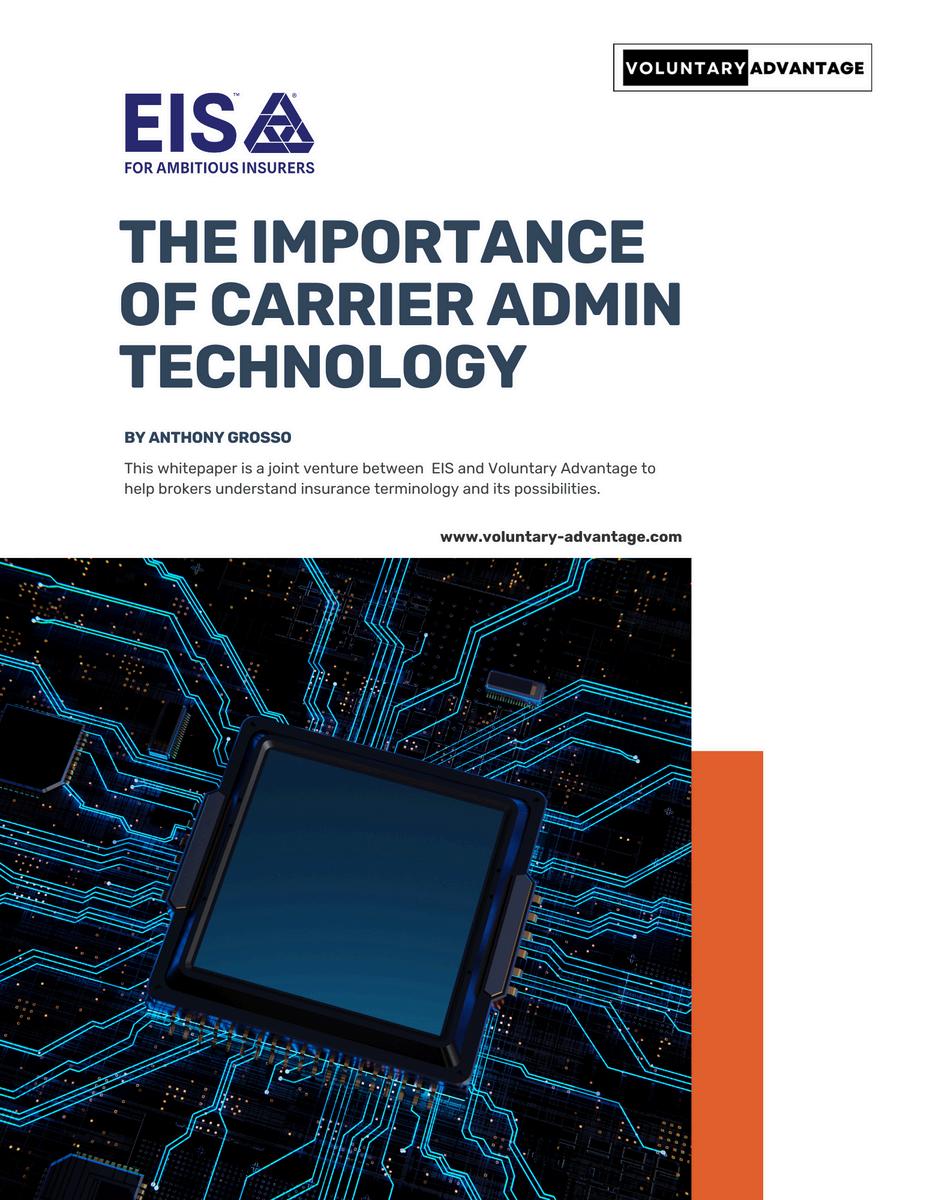


Anthony “Tony” Grosso Head of Growth / GWB Insurance Markets
Tony has over 25 years of hands-on experience leading innovation, business development, product and marketing across all sectors of the insurance industry Tony is leading the GWB market for EIS, a high growth company, helping Voluntary Benefits insurers to achieve their ambitious plans and incredible potential

Let’s face it: we all know legacy systems are holding insurers back
This is why it’s our mission as a coretech supplier for insurers to stop that problem in its tracks. Our cloud-native SaaS platform is built to catapult insurers past old, legacy limitations, and to truly future-proof their technology ecosystem so their business model, product offers, and ways of serving their customers are never held back again, so they can have the truly agile operations of a tech company, rather than a legacy company stuck in decades past Learn more at www eisgroup com

By Katie Carroll
Let's talk real for a minute Employee benefits aren't the same old thing anymore and honestly, that’s a good thing While headlines buzz around the recently enacted "Big Beautiful Bill," HR leaders, benefits pros, and brokers know there's far more at stake than political posturing This legislation isn't just another compliance checkbox; it’s changing employee compensation and your entire benefits strategy.
One of the most immediate changes from the Big Beautiful Bill is eliminating federal income tax on tips and overtime pay. That’s great news for employees, of course, but it also changes how they think about their overall compensation
Clear, thoughtful communication has never been more important, especially when it directly affects employees’ take-home pay
Employees now see more money in their paychecks, prompting them to reconsider their decisions around voluntary benefits, financial wellness, and savings programs.

Here’s what you need to do:
Update your total rewards messaging immediately – clearly show how the changes impact them
Prepare for more questions and confusion around tax implications, voluntary benefits, and savings strategies during onboarding and open enrollment
Emphasize how voluntary benefits still provide essential protection that extra take-home pay alone simply can’t
Employees may feel financially stronger short-term, but benefits like accident insurance, critical illness coverage, and emergency savings still play a crucial role in long-term financial stability.
The Big Beautiful Bill doesn't just stop with paychecks it also slashes Medicaid funding, potentially leaving millions without public healthcare coverage. Employers will soon see more employees turning to company-sponsored benefits for themselves and their dependents.
For benefit pros, this means:
Prepare for higher enrollment from part-time, hourly, and lower-wage employees who previously relied on public healthcare
Clearly communicate eligibility requirements, available benefits options, and provide empathetic support for employees newly navigating employer coverage
Review your current benefit plans are they clear enough? Affordable enough? Accessible enough?
Your response here isn't optional it's essential. Now’s the time to make your benefits clearer, simpler, and more accessible to support your people through these changes.
Benefits decisions are becoming increasingly complicated, and employees need more personalized support. The Empyrean Research Institute recently highlighted that personalized benefits significantly boost employee engagement and retention [1].
Yet, most benefits strategies remain generic That won’t cut it anymore
AI can help fill this gap Think about employees getting benefit recommendations that match their real-life health situations and personal needs This isn't futuristic it's happening now, and it's transformative
Personalized communication and benefit recommendations: Increase voluntary benefit enrollment and participation Improve employees' financial wellness and preparedness. Create meaningful engagement yearround not just during open enrollment.
This is how you truly support people when they need it most, creating lasting employee loyalty and a stronger organization.
Let’s get clear about something: Benefits aren’t just coverage they’re culture Free lunches and fancy perks are fun, but what makes employees truly stay is a culture of genuine support and belonging Especially in today’s fragmented, hybrid world, culturedriven benefits aren’t a "nice-to-have" they’re essential.
Companies that get this right are offering benefits that genuinely reflect their employees’ real-world needs, such as: Menopause support programs acknowledging the needs of half your workforce isn't just inclusive, it's smart Eldercare and caregiving benefits employees navigating these pressures often do so silently Offering support is both humane and strategic Financial wellness coaching not just generic advice, but real tools to address how to get a mortgage, student loans, budgeting, debt reduction, and emergency savings
From conversations I've had with employees and peers, I've seen firsthand how these types of benefits really resonate they signal that an organization sees, values, and supports its employees through real-life challenges. That’s culture at its best.
Let’s talk business for a moment. Companies investing in belonging-driven benefits see clear results. Gallup reports highly engaged teams see up to 21% higher profitability [2], and the Empyrean Research Institute finds personalized benefits significantly reduce turnover [1].
Simply put: Belonging drives real business results
So how do you accomplish this?
Listen to employees' needs through ongoing surveys, direct feedback, and engagement data
Reallocate budgets from underused traditional benefits towards new programs that employees value
Use AI and predictive analytics to proactively support employees at key life moments, ensuring benefits are always relevant and impactful

The Big Beautiful Bill is more than legislation it’s a wake-up call. It emphasizes how employers are now more influential than ever in shaping their employees' financial stability, health, and sense of belonging
As benefits leaders, our role has expanded from administration and compliance to proactive, personalized support and strategic advisement Let’s embrace that responsibility to create workplaces where employees don't just survive they thrive
By staying proactive and focusing on communication, personalization, and true cultural belonging, we can turn these legislative shifts into opportunities for growth, connection, and lasting success
Culture isn't something you just offer it's something you intentionally build over time And your benefits, when done thoughtfully, are among your most powerful tools
Are you ready to build something meaningful?
[1] Empyrean Research Institute: https://goempyreancom/resources/empyrean-research-institute
[2] Gallup State of the Global Workplace Report: https://wwwgallupcom/workplace/349484/state-ofthe-global-workplaceaspx
Katie Carroll, Senior Director of Go-To-Market at Empyrean - Katie is a recognized thought leader in employee engagement and benefits marketing, known for cutting through complexity and creating clear, relatable strategies that resonate. With ove 15 years at the intersection of healthcare and technology, she specializes in Go-to Market strategy, translating innovative HealthTech solutions into human-centered experiences As the Senior Director of Go-to-Market at Empyrean, Katie champions benefits strategies that foster genuine employee belonging, helping HR leaders leverage technology and personalization to make benefits simpler, more accessible and impactful for everyone



VoluntaryAdvantagehaspartneredwithNABIPtoupdatetheirVoluntary/WorksiteCertificationand itisliveandavailabletoyou24/7virtually.
ThecostoftheVoluntary/WorksiteCertificationcourseis$304.70forNABIPmembersand$401.50fornonmembers,whichincludesonlineinstructioninthreeone-hourwebinarmodules,afinalexamand continuingeducationcredits.Uponcompletion,youwillreceiveacertificateofcompletionas voluntary/worksitecertified.
CourseHighlights:
Mastertheproductwithinnovativesolutions
Understandcontractdifferences
Reviewimplementationandadministration
Obtaincrucialcomplianceinsights


By Heather & Trevor Garbers
Caregiving is no longer a side responsibility it’s a central part of life for millions of working Americans. From new parents to adult children caring for aging relatives, the need for caregiving support is now a defining factor in how employees evaluate their workplace benefits According to Prudential’s 2025 Benefits & Beyond study, 33% of employees have taken time off to care for a child, 41% for someone other than a child, and 21% for both These numbers are impossible to ignore and smart employers aren’t trying to
“Paid leave is no longer a nice-to-have,” says Meghan Pistritto, VP and Product Lead for Disability, State Paid Leave & Well-being at Prudential Group Insurance “It’s a must-have to attract and retain top talent in a competitive labor market. For employers who don’t adapt, the risk is falling behind.”
With more people stepping into caregiving roles, workplace policies must evolve to reflect this new reality. The traditional approach of lumping all time off into a general PTO bank no longer meets the needs of today’s workforce. Instead, employees are looking for benefits that allow them to fulfill their caregiving responsibilities without sacrificing financial stability or career progression
Despite increasing awareness, Prudential’s research shows that only 52% of employers currently offer paid caregiving leave That means nearly half of US organizations are missing a critical opportunity to better support employees and better compete for talent
Paid leave is only part of the equation. As caregiving responsibilities become more complex, forward-thinking organizations are broadening their support strategies to include:
Flexible work arrangements that help caregivers manage daily responsibilities
Mental health support tailored to the unique challenges of caregiving
Financial counseling, wellness programs, and caregiving education
Leave policies that clarify eligibility and usage, reducing confusion and stigma
“Caregiving is multifaceted,” Pistritto explains “Organizations must consider the physical, mental, social, and financial dimensions of well-being. It’s not just about time off it’s about giving employees the tools and flexibility to maintain balance in their lives.”
And it’s not only about childcare. Employees may need to care for elderly parents, disabled family members, or even pets during medical emergencies By expanding the definition of caregiving and clearly communicating benefit offerings, employers can help reduce misuse of PTO, unpaid absences, and employee stress
While most employers have embraced the importance of mental health, many are still operating at the surface level offering traditional Employee Assistance Programs (EAPs) without integrating mental well-being into the broader benefits ecosystem
Prudential is encouraging clients to go further “Mental health needs to be part of everyday workplace life,” says Pistritto “That could mean digital access to therapy, or offering no-questions-asked mental health days that are separate from PTO When we consider mental health alongside financial and social well-being, the impact is significantly greater”
One of the biggest mistakes employers make is treating benefits as static, when employees’ needs evolve over time From young professionals caring for pets or starting families to mid-career employees supporting aging parents, caregiving can take many forms.
Pistritto emphasizes the importance of empathy and relevance in benefits communication. “We need to meet employees where they are. They may not have the time, tools, or context to make the best benefit decisions. It’s our job to guide them clearly, empathetically, and proactively”
This includes helping employees understand the intent behind leave policies, when and how to use them, and how they fit into broader well-being programs Encouraging employees to utilize these benefits without guilt helps reduce stigma and reinforces an organization’s commitment to wellness
The data is compelling Prudential’s study found that when employees view their benefits as modern and relevant, 90% say they’re likely to stay with their employer. When benefits feel outdated or irrelevant, that number drops to 73%.
That’s not just a retention issue it’s a competitive edge Benefits aligned with real-world needs don’t just support employees, they drive culture, performance, and long-term growth
“Benefits are not just a checkbox,” says Pistritto “They’re a strategic asset When you align them with your workforce’s realities especially around caregiving you create a more engaged, loyal, and productive employee base”
As caregiving continues to touch every corner of the workforce, employers must adapt or risk falling behind. Paid leave and caregiver support are no longer fringe benefits they’re foundational to building a workplace culture that’s inclusive, resilient, and future-ready
Whether through policy design, communication, or holistic well-being strategies, now is the time to meet employees where they are and give them the support they need to thrive, both at work and at home

Meghan Pistritto, Vice President, Product Lead for Disability, State Paid Leaves and Holistic Well-Being, Prudential Financial, Group Insurance - Meghan oversees the strategic direction and financial performance, aiming to create products that blend science, technology, and human-centered design With over 15 years in the Group Disability and Absence industry, Meghan excels in navigating regulatory complexities

By Steve Clabaugh, CLU, ChFC
Relationalleadersdemonstratethattheycarefortheirteammembersasmuchasthe organization.Asaresult,theycreate,buildandleadhigh-performanceteamsthat consistentlyachieveexcellence.
I’m often asked about what a Relational Leadership Experience program is like and specifically what goes during each of the 4 units Having recently completed a program with an outstanding group of leaders, I thought this would be a good time to write about it
To maximize the benefit to an organization, we work to accommodate the type of schedule, location and timing to meet their particular needs. We’ve done programs in a retreat format over 3-4 days; in company training rooms over an extended period of time; and during Zoom sessions over 10-12 weeks.
Our flexibility to meet the organizational needs is one of the benefits of being small and nimble
This program was for a rapidly growing manufacturing company with heavy time demands on its leadership team We were able to schedule the program over a period of 4 Fridays starting early and ending by midafternoon, so the leaders were able to attend to important matters before the weekend. Classes were held in their well equipped and comfortable training room.
It’s important to point out that the schedule dates, timing and location were carefully considered and worked out over a period of time in cooperation with senior company leadership
How we think is as important as what we think I began the program with a discussion based on the Birkman Method references to linear concrete and global conceptual thinking styles The late Dr Roger Birkman didn’t coin the terms, but they are an integral part of the Birkman Method’s emphasis on personality and perception I shared my thinking style (linear concrete) and my wife, Gretchen’s (global conceptual) to illustrate the differences and how they can work together effectively (at least they have for the past 51 years for us). (For more information check the Voluntary Voice archives for my October 2023 article “It’s Not Just What You Think But How.”}
We then asked each participant, as part of introducing themselves, to describe their thinking style It made for an entertaining and high energy discussion and set the tone for the entire program Participants regularly referred back to the styles during every session It also undergirded the importance of having both styles present in creating a highperformance team
What’s Going On In The World of Work Today?
Another high energy discussion took place around the subject of unique challenges faced by organizations in today’s work environment After listing a number of troublesome issues, we considered the challenges of past generations and how they overcame them. This provided encouragement that the current generation has good reason to be positive about the solutions they will create.
Definitions and Historical Perspective
The next section focused on defining and contrasting the differences between management and leadership with a specific definition of relational leadership
Two historical examples of relational leaders were considered: Admiral Grace Hopper (Voluntary Voice archives February 2023) and AP Giannini (Voluntary Voice archives September 2023)
The leader’s primary role in any business organization is to create, build and lead a high-performance team The principles of Championship Team Behavior are foundational to that process The majority of time during Unit 1 was spent on describing the 6 principles and discussing how they are applied to business in general and their business specifically.
The 6 principles of Championship Team Behavior are:
1.We Work Together as Colleagues
2.We Do Not Accept Case Building
3.We Don’t Tolerate Blaming
4 We Deal With Breakdowns (vs Problems)
5 We Say the “Unsaids”
6 We Negotiate Relationships and Conditions of Satisfaction
Once the principles were covered we considered the various ways to determine whether a situation was a problem (to be handled by the manager) or a breakdown to be processed and resolved by the highperformance team We considered examples of how to conduct a Championship Team Discussion when there is a breakdown (See Voluntary Voice archives March 2025)
RLE is based on the idea that practicing the use of principles and techniques learned in class is equally important to the lessons taught. Participants were given 6 real world scenarios to consider, first individually and then in teams, and determine whether the situation was a problem or a breakdown They identified steps that might be taken to resolve the issue and how they would conduct the Championship Team Discussion
This was another high energy discussion with a range of outcomes that were then shared with the entire class. The interest level and personality of the participants made this very enjoyable and meaningful for all.
In order to build a high-performance team you have to choose the right team members and make sure you have them in the right positions. Sometimes the leader has the opportunity to select and develop a brandnew team Most of the time, however, the leader inherits a team with, at least, some of the team members already in place RLE provides a unique combination of tools to assist leaders in evaluating current team members; selecting new ones and measuring the current stage of team’s development
The principles and techniques taught in RLE programs are based on the research and wisdom of outstanding leaders of the past They are further enhanced by actual experience gained by applying them in real world settings in different types of organizations with different work environments.
There are many researchers, professors and business leaders who have developed and applied the principles we teach, among them are 3 individuals whose work led to the creation of the Productivity Formula and the Stages of Group Development
Dr Donald Clifton – A behavioral psychologist who used positive strength emphasis in employee selection and management His Clifton Strengths Evaluator is still in use today in the selection and hiring process His passion was centered around the question: “What will happen when we think about what is right with people rather than fixating on what is wrong with them?”
Dr. Roger Birkman – An organizational psychologist and contemporary of Dr. Clifton. His Birkman Method is used to help organizations “better understand interpersonal dynamics and achieve higher performance through positive psychology.”
Dr Bruce Tuckman – The focus of his research was centered around developing a workable theory of group dynamics Tuckman’s Stages of Group Development is also referred to as FSNP and is one of the core principles of the Six Sigma program
The Productivity Formula is a practical application from the work of these leaders It provides a simple and straightforward way of evaluating the likelihood of high-performance on the part of both existing team members and potential new hires. We explained the formula (Talent x Relationship = Productivity) and shared several illustrations where we had used the formula and others where we didn’t. It was not a pleasant chore to share some of the painful experiences where we had not used the formula. Fortunately, we had some positive experiences to share where we had used it and enjoyed some great results (See Voluntary Voice archives March 2023)
We conducted a real world exercise in using the Productivity Formula in choosing the right individual to hire Each participant received a brief bio of 3 individuals applying for the same position, along with, a list of sample interview questions they might ask 3 participants volunteered to act as the applicants and were provided with back story information about each one Participants then interviewed each applicant and completed a formula calculation for each with their recommendation of who to hire.
The resulting interviews, evaluations and determinations were not only valuable but very enjoyable as our class really got into the project with focused enthusiasm. They were then able to see how the differences in evaluation scoring (and there were several differences), encourages averaging the results of several interviewers to get the best results
We presented Dr. Tuckman’s analysis of the four stages of group development: Forming, Storming, Norming and Performing. Using actual case studies, we considered how to determine a particular group’s stage at a given time A unique aspect of RLE is the way we combine the Productivity Formula Scores with the Stages of Group Development This not only provides a meaningful measure of a team’s current stage of development but promotes planning for how to move a team to the next higher stage Using this combination benefits the individual team members and the team as a whole
This was the second most complex and timeconsuming project of the program Each participant was tasked to use the Productivity Formula to analyze a case study on each of six team members and then to score the team’s current development. They then developed a strategy and plans for developing the team and growing it to the next level.
Once each individual had completed their project, they worked in teams to compare results and presented their findings and recommendations to the entire class. The enthusiastic participation of each member, their teams, and the group as a whole, contributed to the value of the exercise The results demonstrated both the various ways leaders can analyze associates, and teams further emphasizing the value of receiving input from other leaders before drawing conclusions
As the presenter, it was also very encouraging to watch as the participants began to develop stronger relationships with each other as they worked together as a team This is one of the signs we look for that a class is beginning to grasp and apply the principles of relational leadership. And that, frankly, is what we’re all about at RLE.
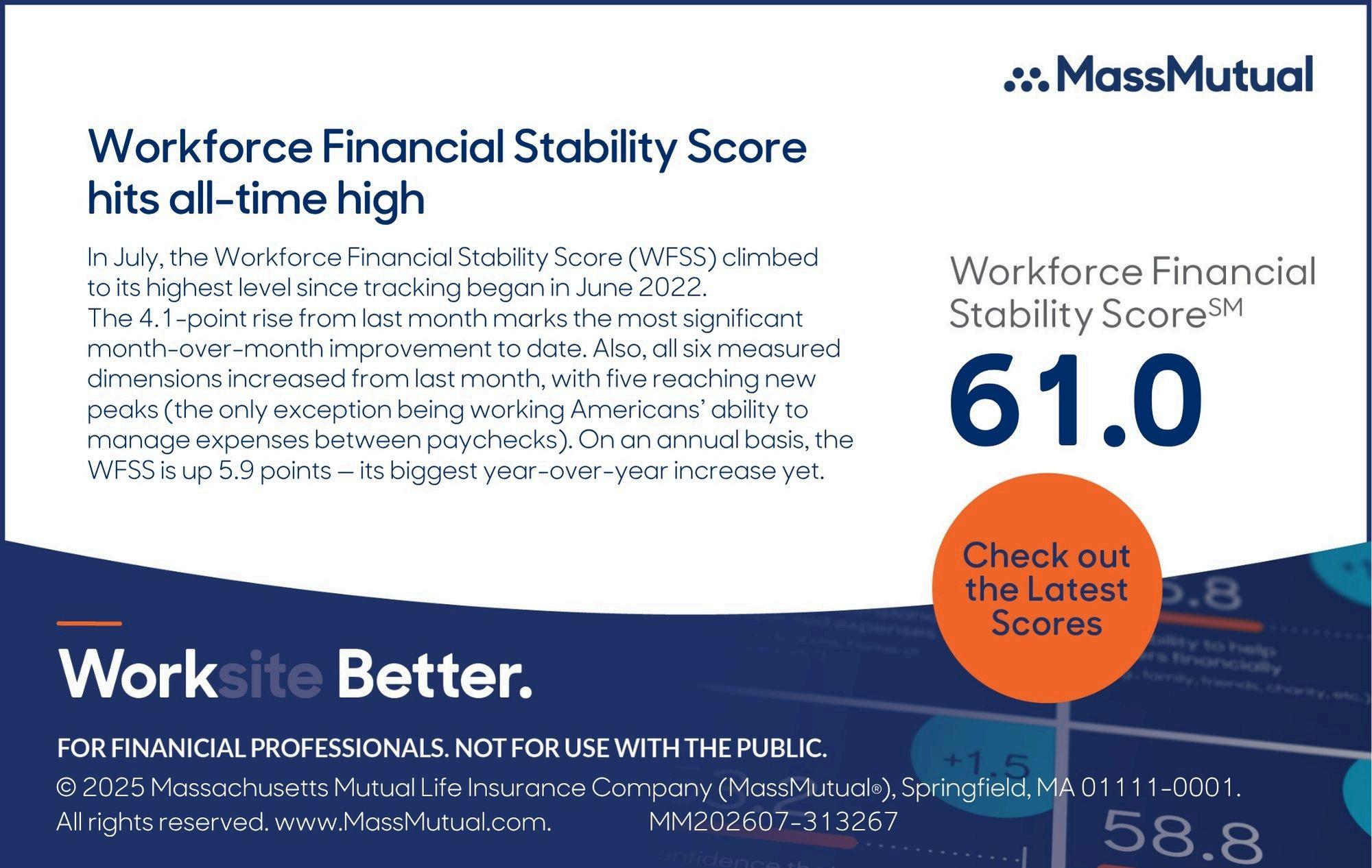
We will write about the experiences from Units 3 and 4 in the future, but hopefully this article will provide some meaningful insight into what an RLE program experience is like We believe relational leadership is a powerful tool, that can help companies build a championship culture, as we navigate turbulent times in today’s work environment If you feel that your organization, or that of a client company can benefit from the RLE program, we will be happy to work with you to customize a program to meet the specific needs.

Steve Clabaugh, CLU, ChFC - started his career in insurance as a Field Agent, moving on to Sales Manager, General Manager, Regional Manager, Vice President, Senior Vice President, and President/CEO A long time student of professional leadership, Steve created the Relational Leadership program that has been used to train home office, field sales associates, mid-level managers, and senior vice presidents.
TheVoluntaryBenefitsIndustryisenjoyingunprecedented growth.Yourproductshelpemployersattractandkeeptheright employees.
But Did You Know? More than 90% of the time, the reason employees leave has to do with issues related to CULTURE!
Relational Leadership Experience (RLE) can give your clients the tools they need to build or enhance their positive culture.
Find out how RLE can help your clients and add a valuable revenue source for you. Request a copy of our report “RLE and You – A Winning Combination.”
Call, Text or Email: Steve Clabaugh, CLU, ChFC 910-977-5934 | relational.leadership@yahoo.com Relational Leadership Experience – We Build Championship Culture